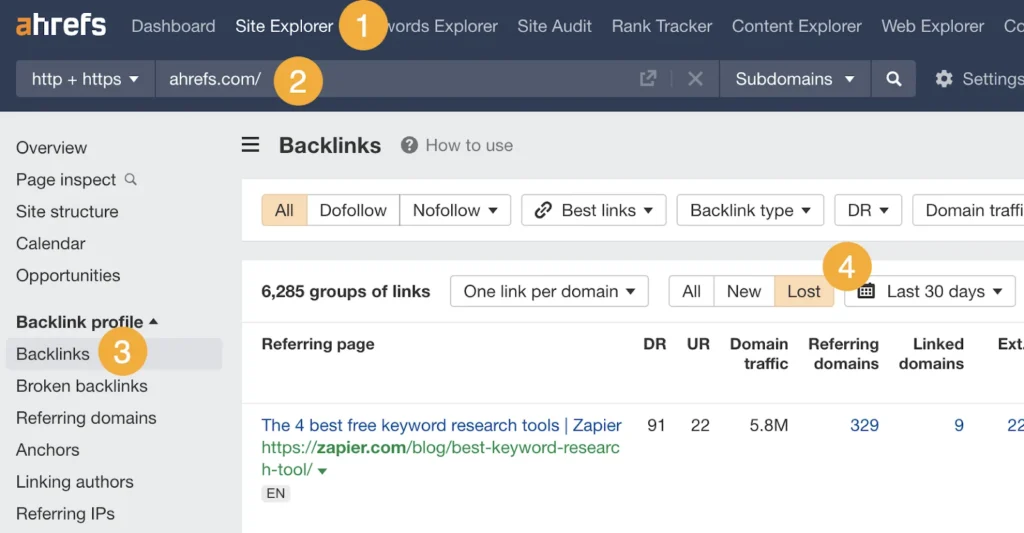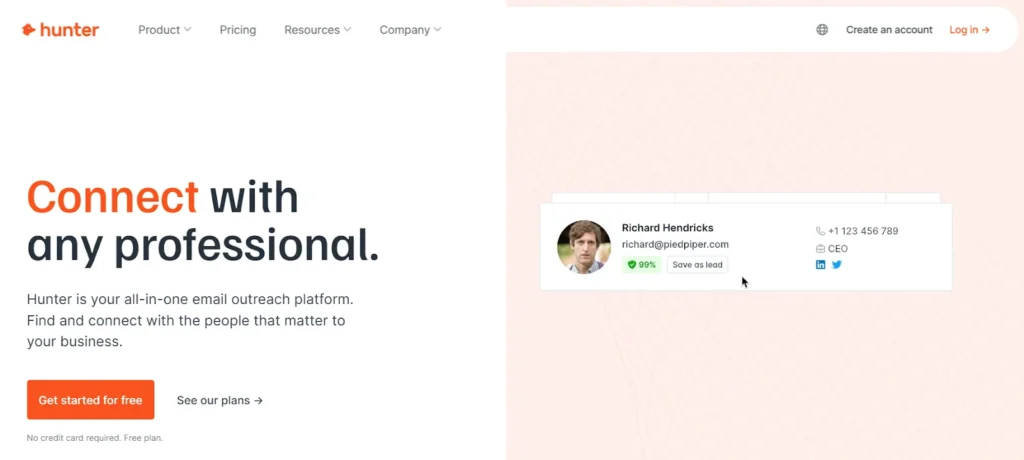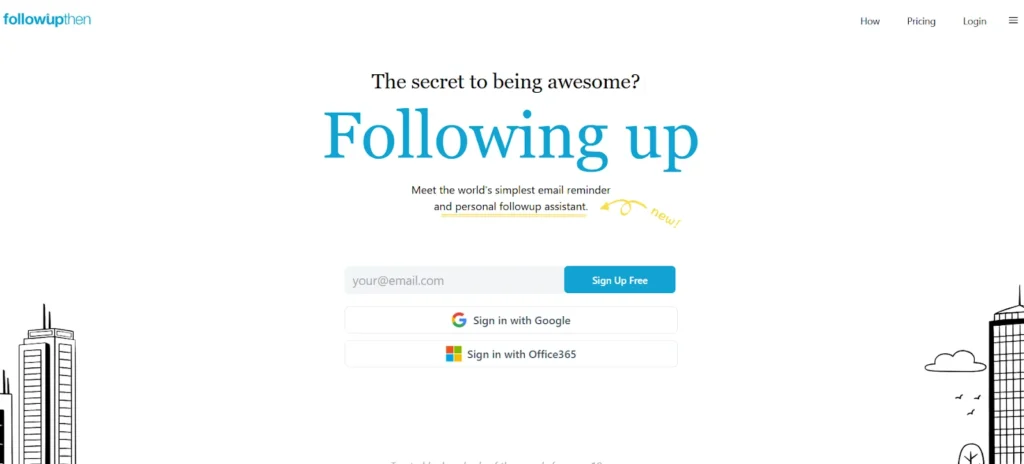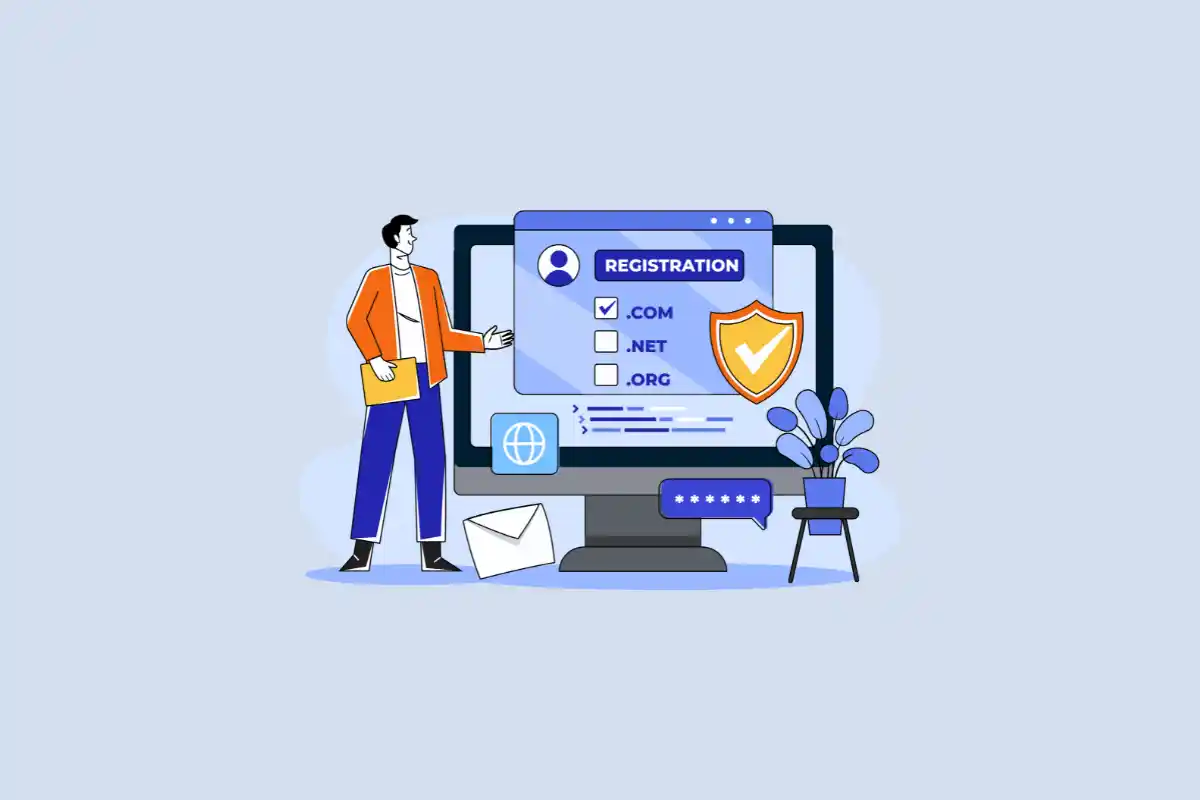Losing backlinks from high-profile sites can cause SEO loss. However, it’s almost inevitable due to broken or lost links. Thankfully, you can get those backlinks back; It’s tech, not magic!
Backlinks are one of the most important ranking factors in SEO, directly impacting your site’s domain authority and search engine rankings.
However, over time, websites lose valuable backlinks, whether through site redesigns, content changes, or link removals. This can result in a drop in organic traffic and search rankings.
Fortunately, link reclamation is an effective strategy to regain lost backlinks and restore your site’s SEO health.
In this guide, we’ll explore the importance of link reclamation and why backlinks get lost. We will also provide a step-by-step process for successfully reclaiming them to boost your domain rating.
Table of Contents
Importance of Link Reclamation
Link reclamation is a crucial process in the SEO landscape. It allows you to recover lost backlinks and maintain your website’s domain authority and search engine rankings.
Backlinks, especially those from authoritative sites, contribute significantly to a website’s visibility on search engines.
Losing these links can negatively affect your site’s SEO performance. In turn, it can potentially cause a decline in organic traffic and domain rating.
Unlike acquiring new backlinks, link reclamation focuses on recovering existing links that were once pointing to your site.
This makes it a highly effective strategy for maintaining or even improving your rankings. And you don’t even have to engage in new outreach efforts.
Since search engines have already indexed these links, they often carry more weight than newly acquired backlinks.
By reclaiming lost links, you can ensure your website retains its backlink profile strength. It can also guarantee that your domain doesn’t suffer any penalties or drops in rankings.
Furthermore, link reclamation saves time and money. Here, you don’t have to go through the entire process of building new links from scratch.
Instead, you’re focusing on restoring valuable relationships and fixing broken or lost links, which is a much more efficient strategy.
In addition to preserving your link equity, reclamation helps you identify technical issues with your site. Some such matters can be broken pages or outdated content that may have caused the link loss in the first place.
Why Do Backlinks Get Lost?
Backlinks can be lost for a variety of reasons, some of which are beyond your control, while others can be remedied with a bit of effort. Below are the main reasons why backlinks get lost-
- Link Removal: One of the most common reasons is when website owners remove or update links to your site.
This can happen during website redesigns, content pruning, or when they decide to clean up their link profile. Sometimes, a once-relevant link may no longer align with the website’s content strategy.
- Broken Links: If the page linking to your website is deleted or the URL structure changes (e.g., moving from HTTP to HTTPS), the link becomes broken.
This results in a 404 error for users trying to access your page from that link.
- Content Updates or Migration: When websites undergo structural changes, such as migrating content to a new domain or restructuring their internal linking, existing backlinks may be overlooked or lost.
- De-indexed Pages: If the page that was linking to your site is removed from search engine indexes due to penalties or technical issues, the link is lost.
- Link Switching: In some cases, webmasters replace your link with another, or your backlink might get buried under new content.
Identifying why your backlinks were lost is essential in the link reclamation process, as it helps you approach the right solutions.
Is Link Reclamation as Hard as Acquiring New Backlinks?
Link reclamation is generally easier and faster than acquiring new backlinks, although it depends on the situation.
The reason for this is that reclaimed links are already established and have been indexed by search engines. You are targeting existing relationships rather than starting from scratch.
This factor often makes the process more straightforward. You won’t have to send cold emails to website owners and hope they’ll link to your content.
Instead, you will reach out to those who have already linked to you, often with a much higher success rate.
However, it’s not without challenges. If a link was removed due to a change in the website’s content strategy or site migration, reclaiming it could require more effort and negotiation.
Broken links or pages that no longer exist may need to be restored, or you may need to find a new link location.
While new backlinks may require more extensive outreach, link reclamation focuses on restoring existing value. This often makes the reclamation process more targeted and efficient.
Additionally, with reclaimed links, you’re often dealing with sites that are already familiar with your content and are more likely to restore the link.
In short, while new link acquisition can be more labour-intensive, link reclamation is often quicker. It also has a higher success rate, provided the right approach is taken.
In-Depth Guide to Link Reclamation
This section will walk you through each step, offering actionable insights for a successful link reclamation campaign.
Step 1: Identify Lost Backlinks
The first step in link reclamation is identifying which backlinks have been lost. You can’t reclaim what you don’t know is missing, so it’s essential to have an accurate list of your backlinks.
Start by auditing your backlink profile using tools like Ahrefs, SEMrush, or Moz. These tools can show you your current and historical backlinks, making it easy to spot those that are no longer pointing to your site.

Additionally, Google Search Console provides valuable insights into 404 errors and pages that return broken links. Look for any links that used to direct users to your site but no longer do so.
By monitoring your backlinks regularly, you can stay on top of lost links and quickly begin the reclamation process when necessary. Once you have identified the lost backlinks, make a list of sites to target.
Step 2: Find the Website Owner or Contact
Once you’ve pinpointed where your lost backlinks came from, it’s time to contact the website owners. This step requires a little detective work, as many websites do not make contact details readily available.
If the site uses Whois data, you can look up the owner’s contact information. Alternatively, many websites include a contact form or email address, often found in the website footer or under the “About Us” page.
If the backlink was from a high-authority domain, you can try finding the content creator or webmaster on LinkedIn. You can also search for their details through social media.
Hunter.io is an excellent tool for finding such information. The tool is specially built for that. However, there are alternatives, like ZoomInfo and Cognism.

Be polite and professional in your outreach—understand that they may not be aware of the broken link.
Once you’ve found the right contact, your next goal is to draft a friendly, clear message. Explain the lost backlink and request its restoration. Be sure to mention how your content is still relevant and valuable for their audience.
Step 3: Reclaim Broken or Removed Links
Next, it’s time to approach the site owners with your reclamation request. The strategy will depend on whether the link was removed voluntarily, broken, or lost due to a website migration.
For broken links, contact the site owner and kindly point out that the link to your page is no longer active.
Offer the original content as an alternative or suggest an updated page that better matches the context of the original link.
For removed links, the process may require more diplomacy. If the page was removed or replaced, reach out to explain why your content is still valuable and why it should be included.
This may involve demonstrating how your content remains relevant and helps their audience.
In either case, your outreach should be polite, professional, and straightforward. Make it as easy as possible for the site owner to restore the link, as they may be more likely to do so if the process is effortless.
Step 4: Request Link Replacements or Updates
Sometimes, instead of reclaiming the exact same link, you might need to suggest an alternative. This often happens if the original page that linked to you has been removed or replaced with another.
To ask for a replacement, start by confirming that the website owner is open to updating the link.
Mention that while the original page is no longer available, your content is still valuable and relevant. Suggest the best current page on your website for the link to be placed.
If the backlink was on a blog post or article, suggest your content as an updated or more accurate resource.
Be specific about how your page enhances their content, such as providing more in-depth research or a more recent publication date.
By framing your request as a mutually beneficial collaboration, the site owner may be more inclined to make the update or replacement.
Step 5: Monitor the Progress
After initiating contact with site owners, it’s important to monitor the progress of your link reclamation efforts. Not all requests will be successful on the first try, and some may take longer than others.
Set reminders to follow up with owners who haven’t responded within a reasonable time—typically about 1-2 weeks. FollowUpThen is a good tool for such reminders.

In your follow-up message, be polite, acknowledging that they may have missed your original request, and kindly ask for an update.
Additionally, you can track changes in your backlink profile using tools like Ahrefs or SEMrush to see if the reclaimed links have been restored.
You should also monitor any impact on your domain authority and search rankings. Determine if the reclaimed links are improving your SEO performance.
By tracking these metrics, you can refine your link reclamation strategy and improve your chances of future success.
Step 6: Repeat the Process
Link reclamation is an ongoing process. As websites continue to update content and remove old pages, new opportunities for reclaiming lost links will arise.
Set up regular audits of your backlink profile to identify any future link losses. It’s a good practice to periodically check broken links, monitor your site’s health, and maintain your backlink profile.
Tools to Help with Link Reclamation
Several SEO tools can assist in the link reclamation process, making it more efficient and manageable. Here are some of the most popular tools-
- Ahrefs: Use Ahrefs’ Site Explorer to monitor your backlinks and identify lost or broken links.
Its Backlink Checker feature provides detailed reports on which links no longer exist, helping you quickly spot opportunities for reclamation.
- SEMrush: With its Backlink Audit Tool, SEMrush allows you to track lost links and monitor the health of your backlink profile.
It also helps identify toxic links that need to be removed, which is a part of maintaining a healthy backlink profile.
- Google Search Console: Google’s free tool offers valuable insights into 404 errors and broken links.
You can find where lost backlinks have been redirected or removed, allowing you to reach out to the right sites.
- Broken Link Checker: This tool allows you to identify broken links on your site and external pages that are linking to you.
Best Practices for Successful Link Reclamation
To ensure the success of your link reclamation efforts, here are some best practices.
- Be Proactive: Regularly monitor your backlink profile using tools like Ahrefs or SEMrush to identify lost or broken links quickly.
- Personalize Your Outreach: When reaching out to webmasters, personalize your emails.
Show that you’ve done your research, and explain how the lost link adds value to their content. A personalized message increases your chances of success.
- Offer Alternatives: If the original link can’t be restored, offer a more relevant or updated resource. Make the process as easy as possible for site owners to replace the broken link.
- Be Polite and Professional: Respectful communication goes a long way. Avoid being demanding or pushy. Instead, be understanding if the webmaster is unable to assist.
- Follow-up: Don’t hesitate to send a follow-up email after a week or two. Many site owners may have missed your first request.
Challenges and How to Overcome Them
Link reclamation can be a highly effective strategy, but it’s not without its challenges. Below are common obstacles and ways to overcome them-
- Unresponsive Webmasters: Sometimes, the site owner may not respond to your initial request. To overcome this, follow up politely after a week or two.
If you still haven’t received a response, you could try reaching out via alternative channels, such as social media or LinkedIn.
- Link Removal Without Explanation: In some cases, backlinks are removed without any prior warning or explanation.
If this happens, your best course of action is to simply explain why the link is important to both parties and request a restoration.
Be prepared for the possibility that the webmaster may not agree to reinstate the link.
- Website Redesigns or Migrations: Sometimes, links are lost due to site redesigns or content migrations, making it harder to pinpoint who to contact.
In these situations, you can try contacting the website’s technical support team or a general contact email to explain the issue.
- Outdated Content: If the content that originally contained your backlink is now irrelevant or outdated, you may need to suggest updated or new content that will better serve their audience.
Be sure to frame this as a mutually beneficial collaboration.
Conclusion
Link reclamation is a vital strategy for maintaining and improving your website’s domain authority and SEO performance.
While acquiring new links is not always simple, link reclamation is often quicker and more cost-effective. You will be leveraging existing relationships and content here.
To successfully reclaim backlinks, you must use the right tools, maintain an organized outreach strategy, and follow best practices. It will help you continue building your site’s online authority.


